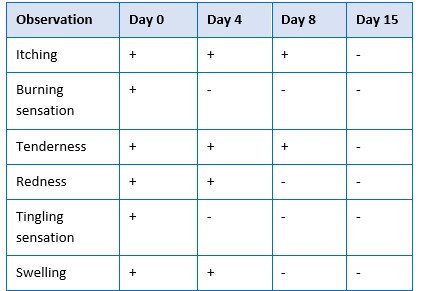Ayurvedic intervention in the management of Keeta Visha (Wasp Bite) : A Case Report
DOI:
https://doi.org/10.21760/jaims.9.6.51Keywords:
Keeta Visha, Wasp bite, Dushivishari Agad, KanabhaAbstract
Wasp stings are common, especially in populations living in vicinity to forested areas all over the world. Wasp is insects related to bees and ants. There are more than 20000 species or types of Wasps. Acharya Sushruta has explained Keeta Visha under Jangama Visha (Animate poison) and categorized 67 different types of Keeta under mainly 4 groups i.e., Vayavya Keeta, Agneya Keeta, Saumya Keeta, Sannipataka Keeta. viz, one each possessing the qualities of individual Doshas separately and one with the qualities of all the doses together. The main characteristics of insect bite are itching, burning sensation, erythema at the site of bite. Reaction to stings vary depending on the numbers of stings delivered & body`s reaction to venom in the sting. This is a case report of 27 years old female (student) residing in Bhopal, visited the OPD with the complaining of wasp bite on lateral aspect of arm just before 30 minutes prior to her visit. She had sharp pain, itching, redness, burning sensation at bite site. She was treated with Dushivishari Agad (500mg), Guduchiyadi Kashayam (500mg) and Yograja Guggul (250mg) and Lepa of Dushivishari Agad and Shatdhaut Ghrit for local application. The interventions controlled the poisoning, inferring that such cases can be successfully manage with Ayurvedic medicines.
Downloads
References
Sushruta Samhita Part-1, Kalpasthana 8/3, Page-80 Dr.Ambikadatta Shastri,2015
Charaka Samhita Part-2, Chikitsa Sthana 23/140, Page-588, Kashinatha Pandey, Dr. Gorkhanatha Chaturvedi, 2020
Sushruta Samhita. Vol.3, Kalpasthana, Chapter 8/8, page-79, P.V. Sharma, 2014, Chaukhambha Visvabharati, oriental publishers & distributers.
Sushruta Samhita. Vol.3, Kalpasthana, Chapter 8/25-27, page-81, P.V. Sharma, 2014, Chaukhambha Visvabharati, oriental publishers & distributers.
Susruta Samhita of Maharsi Susruta Vol.3, Kalpasthana, Chapter 8, page-60, Prof. Dr. Vasant C. Patil, Dr. Rajeshwari N.M.
Nitin Urmaliya Text Book Of Agad Tantra Chaukhambha Orientalia Varanasi, Edition 1st, 2011; p.161
Vasant C. Patil, Susruta Samhita with English translation of text and Dalhana’s commentary with critical notes vol. 3 Kalpa Sthana and Uttara tantra Ch. 02, Chaukhambha Publication; 2022 p. 18
Vijaya Kumari K, K. Nishteswar, Wound healing activity of honey: A pilot study. AYU/2012/33/3, [cited 2015 August 18], http;//www.ayujournal.org
Sreekumar T, editor. Astanga Hridayam of Vagbhata, Sutra Sthana; Ch 15, Ver. 16. 2nd ed. Thrissur: Publication Department Harisree Hospital; 2008. p.380.















